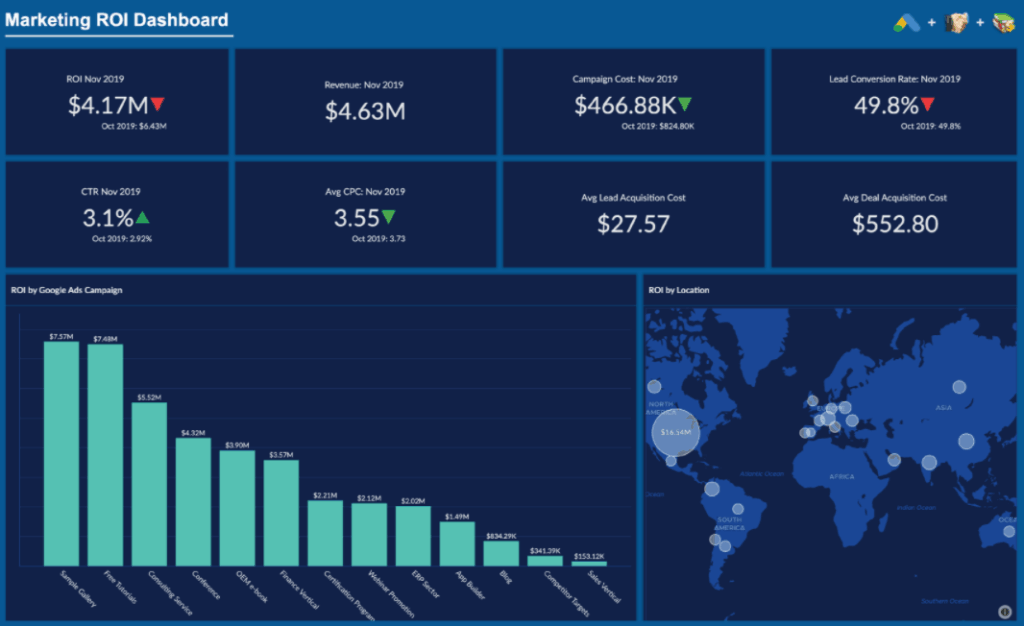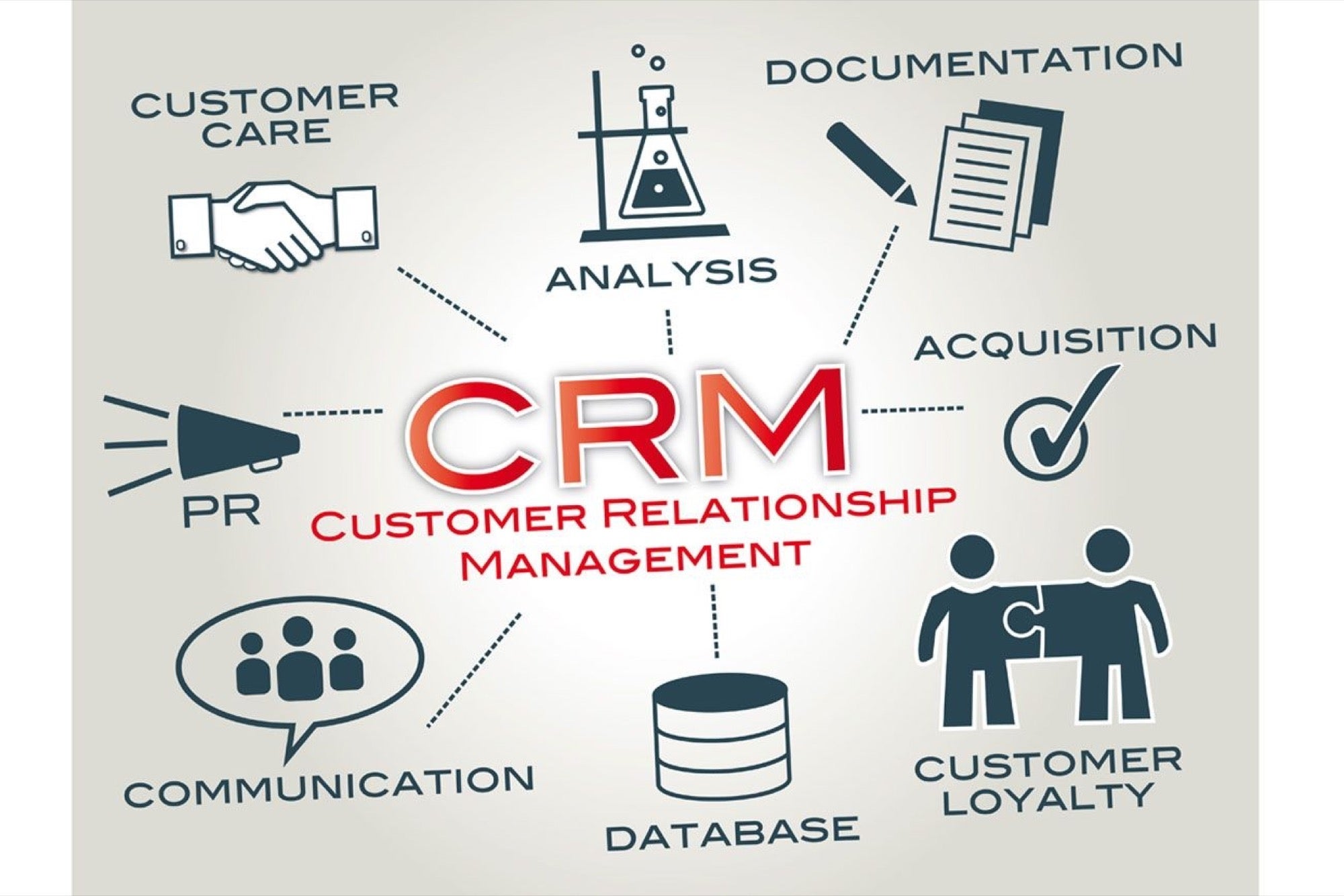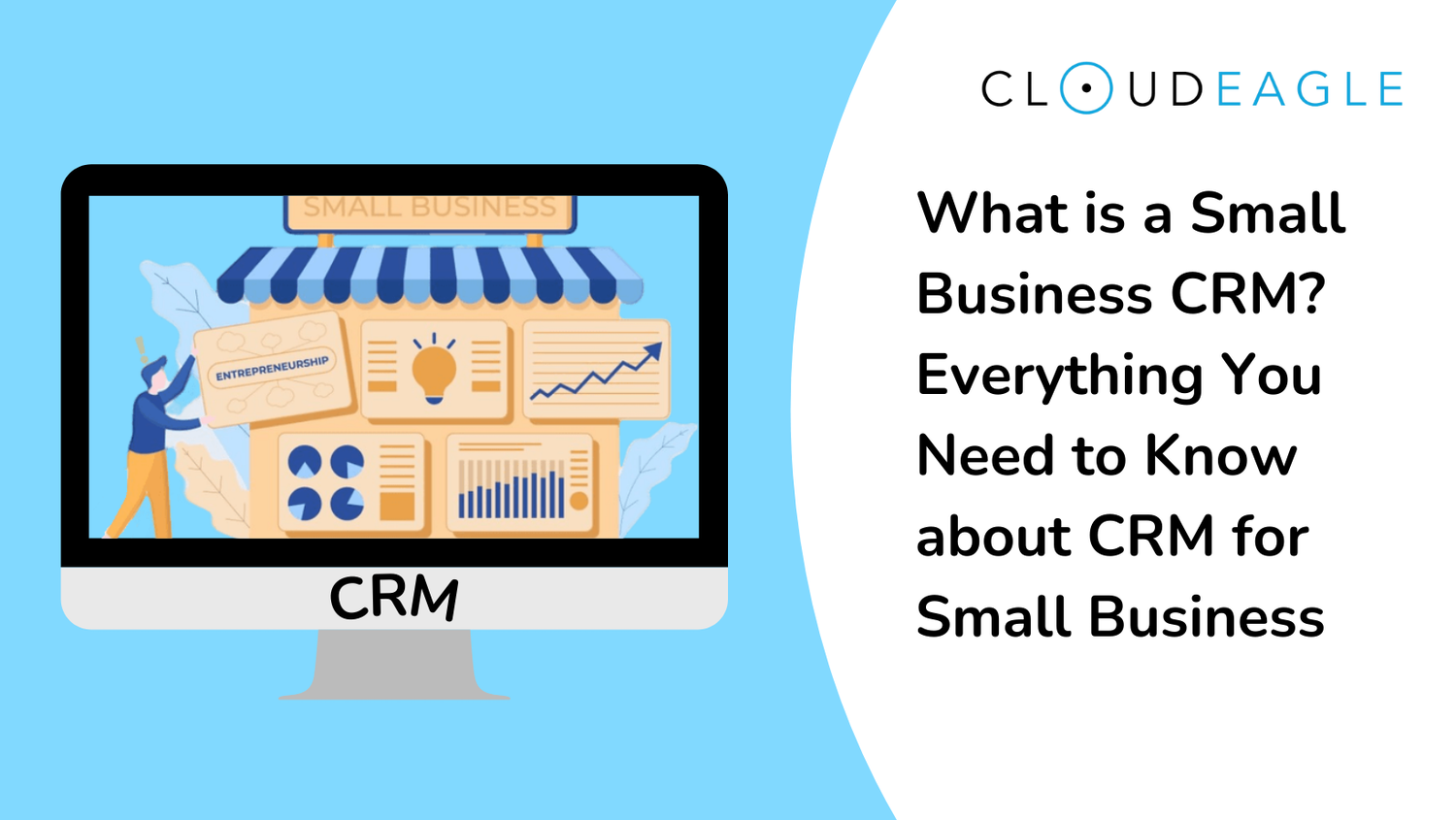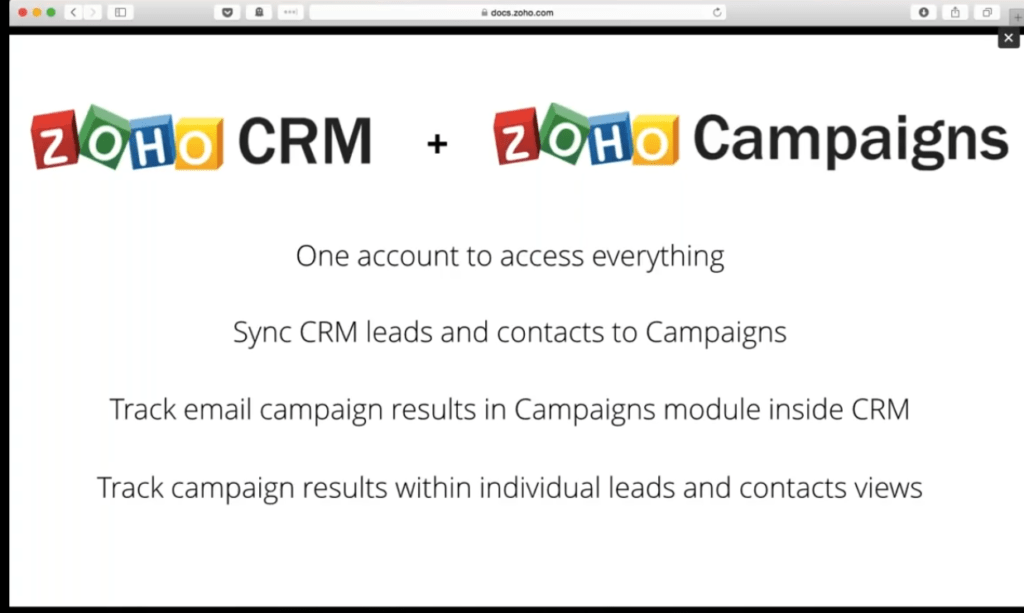
Introduction: Why CRM Marketing ROI Matters
In the fast-paced world of business, every dollar spent needs to deliver a solid return. That’s especially true when it comes to marketing. And when we talk about marketing, Customer Relationship Management (CRM) systems are often at the heart of the strategy. CRM marketing isn’t just about collecting customer data; it’s about leveraging that data to build stronger relationships, personalize experiences, and ultimately, boost your bottom line. But, like any investment, you need to understand how to measure and optimize your CRM marketing ROI (Return on Investment) to ensure you’re getting the most bang for your buck. This comprehensive guide delves into the core of CRM marketing ROI, offering actionable tips, real-world examples, and strategic insights to help you achieve maximum returns.
Before we dive in, let’s be clear: calculating and improving CRM marketing ROI is not a set-it-and-forget-it task. It requires ongoing analysis, adaptation, and a commitment to understanding your customers. The goal isn’t just to implement a CRM system; it’s to transform your entire approach to customer engagement.
Understanding CRM Marketing ROI: The Basics
At its simplest, CRM marketing ROI is a metric that measures the profitability of your CRM marketing efforts. It helps you determine whether the investments you’ve made in your CRM system, your marketing campaigns, and your customer engagement strategies are paying off. Calculating ROI involves comparing the revenue generated from CRM-driven activities to the costs associated with those activities. The formula is straightforward:
ROI = [(Revenue Generated - Cost of Investment) / Cost of Investment] * 100
For example, if your CRM-driven marketing campaign generates $100,000 in revenue and the total cost of the campaign (including CRM software, marketing personnel, and campaign expenses) is $20,000, your ROI would be calculated as follows:
ROI = [($100,000 - $20,000) / $20,000] * 100 = 400%
A 400% ROI is a fantastic result, indicating that for every dollar invested, you’re getting $4 back. However, achieving such impressive figures requires a strategic approach and a keen understanding of the factors that influence ROI. It’s also important to note that the specific metrics you track may vary depending on your industry, business model, and the specific goals of your CRM marketing initiatives.
Key Components of CRM Marketing ROI
Several key components contribute to a successful CRM marketing ROI. Understanding these components is crucial for effectively planning, executing, and measuring your CRM marketing efforts.
1. CRM Software Investment
This includes the initial cost of the CRM software, any ongoing subscription fees, and the cost of customization and integration with other systems. The choice of CRM software is critical. Consider the specific features, scalability, and ease of use that align with your business needs.
2. Implementation Costs
Implementing a CRM system involves costs associated with data migration, system configuration, and training your team. A smooth implementation process is essential to ensure that your team can effectively utilize the CRM system and capture the benefits.
3. Marketing Campaign Costs
This covers the expenses related to the marketing campaigns you run through your CRM system. It includes the cost of creating marketing materials, email marketing platforms, advertising, and other promotional activities. You need to meticulously track these costs to accurately calculate your ROI.
4. Personnel Costs
The salaries of your marketing team, sales representatives, and any other personnel involved in CRM marketing activities. This is a significant expense, so it’s vital to ensure your team is well-trained and efficient.
5. Customer Acquisition Cost (CAC)
The cost of acquiring a new customer. CRM systems can help reduce CAC by streamlining sales processes and improving targeting. Lowering CAC is a significant driver of increased ROI.
6. Customer Lifetime Value (CLTV)
The predicted revenue a customer will generate throughout their relationship with your business. CRM systems can help increase CLTV by fostering customer loyalty, personalization, and cross-selling/upselling opportunities.
7. Sales Cycle Length
The time it takes to convert a lead into a paying customer. CRM systems can help shorten the sales cycle by automating tasks, providing sales teams with valuable insights, and improving communication.
Tips to Maximize Your CRM Marketing ROI
Now, let’s dive into the actionable tips and strategies that can help you maximize your CRM marketing ROI. These tips cover various aspects, from data management and campaign optimization to customer engagement and sales alignment.
1. Data Quality is Paramount
Your CRM system is only as good as the data it contains. Inaccurate, incomplete, or outdated data will lead to wasted marketing efforts and a lower ROI. Ensure you implement robust data cleansing and validation processes. This includes regular data audits, removing duplicate entries, and updating contact information. Encourage your team to accurately input and update data. Consider using data enrichment tools to automatically fill in missing information.
2. Segmentation is Key
Don’t treat all your customers the same. Segment your customer base based on demographics, behavior, purchase history, and other relevant factors. This allows you to tailor your marketing messages and offers to specific customer groups, increasing the likelihood of engagement and conversions. For example, you can segment customers based on their recent purchases and create targeted email campaigns to promote related products. Use your CRM data to create dynamic segments that automatically update as customer behavior changes.
3. Personalization is Essential
Personalization goes hand-in-hand with segmentation. Once you’ve segmented your audience, personalize your marketing messages, offers, and website content to resonate with each segment. Use the customer’s name, refer to their past purchases, and offer relevant product recommendations. Personalization makes customers feel valued and understood, leading to higher engagement rates and conversions. Dynamic content and automated email sequences are powerful tools for personalization.
4. Automate, Automate, Automate
CRM systems offer powerful automation capabilities. Automate repetitive tasks such as email follow-ups, lead nurturing, and customer onboarding. Automation frees up your team’s time to focus on more strategic activities and improves the efficiency of your marketing efforts. Implement automated workflows to trigger specific actions based on customer behavior, such as sending a welcome email when a new customer signs up or sending a cart abandonment email when a customer leaves items in their shopping cart.
5. Optimize Your Email Marketing
Email marketing is a cornerstone of CRM marketing. Optimize your email campaigns for maximum impact. This includes crafting compelling subject lines, designing visually appealing emails, and ensuring your emails are mobile-friendly. A/B test different email elements, such as subject lines, calls to action, and content, to identify what resonates best with your audience. Track your email open rates, click-through rates, and conversion rates to continuously improve your campaigns. Avoid sending generic, mass emails; instead, personalize your email content and segment your audience for higher engagement.
6. Align Sales and Marketing
Ensure your sales and marketing teams are aligned and working together. This includes sharing data, establishing clear lead qualification processes, and creating a seamless customer experience. A well-aligned sales and marketing team can significantly improve lead conversion rates and customer retention. Implement a Service Level Agreement (SLA) between sales and marketing to define roles, responsibilities, and performance metrics. Use your CRM system to track leads throughout the sales funnel and monitor the effectiveness of your lead nurturing efforts.
7. Implement Lead Scoring
Lead scoring helps you prioritize your leads and focus your sales team’s efforts on the most promising prospects. Assign points to leads based on their demographics, behavior, and engagement with your marketing content. Leads with higher scores are more likely to convert into customers. Lead scoring helps you improve sales efficiency and increase your ROI. Regularly review and adjust your lead scoring criteria to ensure it’s accurately reflecting your ideal customer profile.
8. Track and Analyze Key Metrics
Regularly track and analyze key metrics to understand the performance of your CRM marketing efforts. This includes metrics such as:
- Website traffic
- Lead generation
- Conversion rates
- Customer acquisition cost (CAC)
- Customer lifetime value (CLTV)
- Email open rates
- Click-through rates
- Return on investment (ROI)
Use your CRM system’s reporting and analytics capabilities to track these metrics. Identify areas for improvement and make data-driven decisions to optimize your campaigns. Regularly review your reports to identify trends and patterns in customer behavior and campaign performance. Use this data to refine your strategies and improve your ROI.
9. Leverage Social Media
Integrate your CRM system with your social media channels. This allows you to track customer interactions, monitor brand mentions, and engage with your audience in real-time. Use social media to drive traffic to your website, generate leads, and build brand awareness. Social media integration also enables you to personalize your social media interactions based on customer data stored in your CRM system. Run targeted social media campaigns to reach specific customer segments and promote your products or services.
10. Provide Excellent Customer Service
Excellent customer service is crucial for customer retention and loyalty. Use your CRM system to track customer interactions, manage support tickets, and personalize your customer service interactions. Provide prompt and helpful responses to customer inquiries. Proactive customer service can significantly improve customer satisfaction and increase CLTV. Train your customer service team to effectively use the CRM system and provide exceptional customer support. Implement feedback mechanisms, such as surveys, to gauge customer satisfaction and identify areas for improvement.
11. Optimize Your Sales Funnel
Analyze your sales funnel to identify bottlenecks and areas for improvement. Use your CRM system to track leads throughout the sales cycle and identify where prospects are dropping off. Optimize each stage of the funnel to improve conversion rates. This may involve refining your lead nurturing strategies, improving your sales presentations, or streamlining your sales process. Regularly review your sales funnel performance and make adjustments as needed.
12. Train Your Team
Ensure your team is well-trained on how to use the CRM system and implement your CRM marketing strategies. Provide ongoing training and support to keep your team up-to-date on the latest features and best practices. A well-trained team will be more effective at utilizing the CRM system and achieving your marketing goals. Invest in training resources, such as online courses, webinars, and workshops. Encourage your team to share best practices and learn from each other.
13. Integrate with Other Tools
Integrate your CRM system with other marketing tools, such as your email marketing platform, marketing automation software, and social media management tools. Integration allows you to streamline your marketing efforts and improve data sharing. This can also help automate tasks, such as lead nurturing and email marketing campaigns. Many CRM systems offer integrations with popular marketing tools, so take advantage of these options.
14. Foster Customer Loyalty
Loyal customers are more likely to make repeat purchases and recommend your business to others. Use your CRM system to build customer loyalty programs, offer exclusive deals, and personalize your interactions. Reward loyal customers with discounts, special offers, and early access to new products or services. Personalize your interactions with loyal customers by acknowledging their past purchases and providing tailored recommendations. Regularly engage with your loyal customers through email, social media, and other channels.
15. Regularly Evaluate and Adapt
The marketing landscape is constantly evolving. Regularly evaluate the performance of your CRM marketing efforts and adapt your strategies as needed. Stay informed about the latest marketing trends and technologies. Be prepared to make changes to your campaigns, processes, and CRM system settings based on your analysis and the changing market conditions. Continuous improvement is critical for maintaining a high ROI.
Real-World Examples: CRM Marketing ROI in Action
Let’s explore some real-world examples to illustrate how businesses are successfully leveraging CRM marketing to achieve impressive ROI figures.
Example 1: E-commerce Retailer
An e-commerce retailer implemented a CRM system to personalize its email marketing campaigns. By segmenting its customer base and sending targeted product recommendations based on past purchases and browsing behavior, the retailer saw a significant increase in sales and customer lifetime value. They used the CRM to automate abandoned cart emails, leading to a 15% recovery rate and a boost in revenue. The ROI on their CRM investment, including software, personnel, and campaign costs, was calculated at 300%.
Example 2: SaaS Company
A SaaS (Software as a Service) company used its CRM to streamline its sales process and improve its lead nurturing efforts. By implementing lead scoring and automating follow-up emails, the company shortened its sales cycle and increased its conversion rates. They integrated the CRM with their website to capture lead information and track customer interactions. The ROI on their CRM implementation, including the cost of software, training, and sales personnel, was calculated at 250% due to the increased number of converted leads.
Example 3: Financial Services Firm
A financial services firm used its CRM to improve customer service and build stronger relationships with its clients. By tracking customer interactions and personalizing its communication, the firm increased customer retention and generated more referrals. They leveraged the CRM to automate customer onboarding and provide proactive support. The ROI on their CRM investment, taking into account software, customer service staff, and client communication expenses, was calculated at 450% because of the increase in customer lifetime value and the reduction in churn rate.
Common Pitfalls to Avoid
While CRM marketing can be highly effective, several common pitfalls can hinder your efforts and negatively impact your ROI. Being aware of these pitfalls and taking steps to avoid them is crucial for success.
1. Poor Data Quality
As mentioned earlier, poor data quality is a significant pitfall. If your CRM system contains inaccurate, incomplete, or outdated data, your marketing efforts will be ineffective. Make sure you have a robust data cleansing and validation process in place.
2. Lack of User Adoption
If your team doesn’t fully adopt the CRM system, your marketing efforts will suffer. Ensure that your team is properly trained on how to use the system and understand its value. Encourage adoption by demonstrating how the CRM system can simplify their tasks and improve their performance.
3. Ignoring Customer Feedback
Ignoring customer feedback can lead to missed opportunities and a decline in customer satisfaction. Regularly solicit and analyze customer feedback to identify areas for improvement. Use your CRM system to track customer interactions and address customer concerns promptly.
4. Failing to Segment Your Audience
Treating all your customers the same will result in lower engagement rates and conversions. Segment your customer base based on relevant criteria and tailor your marketing messages to each segment. Personalize your communication and offer relevant products and services.
5. Not Aligning Sales and Marketing
A lack of alignment between your sales and marketing teams can lead to missed opportunities and inefficiencies. Establish clear lead qualification processes and ensure that both teams are working towards the same goals. Share data and insights to improve communication and collaboration.
6. Measuring the Wrong Metrics
Focusing on the wrong metrics can lead you astray and misinform your strategies. Make sure to track the right KPIs that are relevant to your business objectives. Regularly review and adjust your metrics as needed to ensure they are accurately reflecting your performance.
7. Failing to Adapt
The marketing landscape is constantly evolving. Failing to adapt to changing market conditions and customer preferences can lead to missed opportunities. Regularly evaluate your CRM marketing efforts and adjust your strategies as needed.
Conclusion: The Future of CRM Marketing ROI
CRM marketing ROI is not just a trend; it’s a necessity for businesses striving to thrive in today’s competitive market. By understanding the key components of ROI, implementing the right strategies, and avoiding common pitfalls, you can unlock the full potential of your CRM system and achieve significant returns on your marketing investments.
The future of CRM marketing ROI is promising. As technology continues to advance, we can expect to see even more sophisticated CRM systems, enhanced automation capabilities, and deeper insights into customer behavior. Artificial intelligence (AI) and machine learning (ML) will play an increasingly important role in personalizing customer experiences and optimizing marketing campaigns. Businesses that embrace these advancements and continuously refine their CRM marketing strategies will be best positioned to succeed.
Remember, the journey to maximizing your CRM marketing ROI is an ongoing process. It requires a commitment to data-driven decision-making, a focus on customer relationships, and a willingness to adapt to the ever-changing marketing landscape. Stay informed, stay agile, and keep striving to improve your CRM marketing ROI. The rewards are well worth the effort.
Final Thoughts
Investing in a CRM system is just the first step. The real magic happens when you actively use the system to build relationships, personalize your interactions, and analyze the data to continuously improve your approach. By focusing on data quality, segmentation, personalization, automation, and sales/marketing alignment, you can turn your CRM investment into a powerful engine for growth. Don’t be afraid to experiment, track your results, and refine your strategies. The more you learn about your customers and how they interact with your business, the better you can tailor your efforts and maximize your returns. Ultimately, CRM marketing is about more than just numbers; it’s about building lasting relationships with your customers and creating a loyal customer base that drives long-term success.




